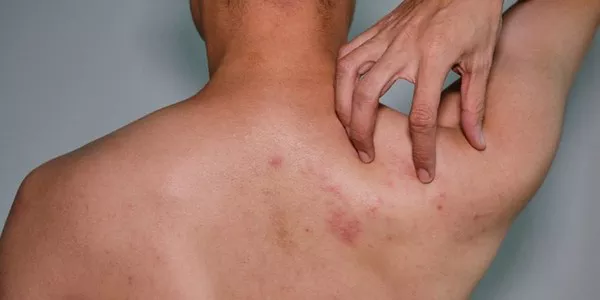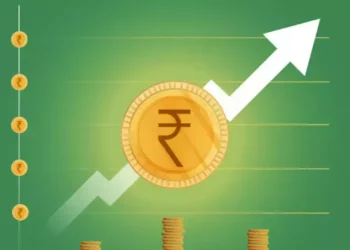In recent years, vaccination has become a cornerstone of public health efforts worldwide, aiming to prevent various infectious diseases and their associated complications. One such vaccine gaining attention is the shingles vaccine, designed to protect against herpes zoster, commonly known as shingles. Despite its proven efficacy and safety, misconceptions persist regarding the vaccine’s potential to cause shingles. In this article, we aim to address this myth, provide insights into the shingles vaccine, and offer clarity on the relationship between vaccination and the development of shingles.
Explaining the Shingles Vaccine
Shingles vaccines, including Shingrix and Zostavax, are specifically formulated to prevent herpes zoster by boosting the immune system’s response to the varicella-zoster virus (VZV), the same virus responsible for chickenpox. Both vaccines function by introducing components of the virus to prompt the body’s immune system to recognize and produce antibodies against VZV.
- Shingrix: This vaccine, approved by the U.S. Food and Drug Administration (FDA) in 2017, contains a non-live antigen that stimulates a robust immune response. It is administered in two doses, with high efficacy in preventing shingles and reducing the risk of postherpetic neuralgia (PHN), a common complication of shingles.
- Zostavax: This earlier vaccine, though less commonly used since the introduction of Shingrix, is a live attenuated vaccine that also aims to prevent shingles by stimulating the immune system. It requires a single dose and has shown efficacy in reducing the incidence of shingles, although not as effectively as Shingrix.
1. Efficacy and Effectiveness of the Vaccine
Clinical trials and real-world studies have consistently demonstrated the efficacy and effectiveness of shingles vaccines in preventing shingles and reducing its complications. Shingrix, in particular, has shown over 90% efficacy across various age groups and is significantly more effective than Zostavax. Moreover, vaccination has been associated with a reduced risk of PHN and other shingles-related complications.
2. Safety Profile of the Vaccine
Both Shingrix and Zostavax have undergone rigorous testing to ensure their safety. Common side effects include injection site reactions, such as pain, redness, and swelling, as well as mild systemic symptoms like fatigue, muscle pain, and headache. These side effects are generally mild to moderate in severity and resolve within a few days.
Importantly, it’s essential to emphasize that neither shingles vaccine contains the live varicella-zoster virus. As such, they cannot cause shingles. Any symptoms resembling shingles following vaccination are typically coincidental or attributable to other factors.
Addressing the Myth: Vaccine Causing Shingles
Despite the scientific evidence supporting the safety of shingles vaccines, a persistent myth suggests that vaccination can lead to shingles. It’s crucial to debunk this misconception and clarify the facts.
1. Debunking the Misconception
The notion that shingles vaccines cause shingles stems from a misunderstanding of their composition and mechanism of action. Unlike some vaccines, such as the live attenuated vaccine for chickenpox, shingles vaccines do not contain live viruses. Instead, they contain specific components or inactivated forms of the virus that stimulate the immune system without causing disease.
2. Explaining Potential Reasons for Shingles After Vaccination
In cases where individuals develop shingles shortly after vaccination, several factors may contribute to this occurrence:
- Coincidental Timing: It’s possible for individuals to develop shingles coincidentally shortly after vaccination. Shingles can occur at any time, particularly in individuals with pre-existing risk factors such as advanced age or compromised immune function.
- Incomplete Immunity: Full immunity to shingles may not develop immediately after vaccination. It takes time for the body to mount a robust immune response and achieve optimal protection against the virus. During this period, individuals may still be susceptible to shingles if exposed to the virus.
3. Highlighting the Reduced Risk of Shingles with Vaccination
While it’s theoretically possible for shingles to occur after vaccination, the risk is significantly lower compared to those who remain unvaccinated. Studies have shown that vaccinated individuals who do develop shingles experience milder symptoms and lower rates of complications compared to unvaccinated individuals.
Providing Information on Shingles
Understanding the nature of shingles is crucial for appreciating the importance of vaccination and managing the condition effectively.
1. Explaining the Disease and Its Cause
Shingles is a painful rash caused by the reactivation of the varicella-zoster virus, the same virus that causes chickenpox. After a person has had chickenpox, the virus remains dormant in the nerve tissue near the spinal cord and can reactivate years later, causing shingles. The characteristic rash typically appears on one side of the body and is accompanied by pain, itching, and blistering.
2. Discussing Risk Factors for Shingles
Several factors increase the risk of developing shingles, including:
- Advanced Age: Shingles primarily affects older adults, with the risk increasing significantly after the age of 50.
- Weakened Immune System: Conditions or medications that weaken the immune system, such as HIV/AIDS or immunosuppressive therapies, can increase the risk of shingles.
- Stress and Illness: Physical or emotional stress, as well as certain illnesses, can trigger shingles by compromising the immune system’s ability to keep the virus in check.
Treatment Options for Shingles
Antiviral medications, such as acyclovir, valacyclovir, and famciclovir, are commonly prescribed to reduce the severity and duration of shingles symptoms. These medications work by suppressing the replication of the varicella-zoster virus. In addition to antiviral therapy, pain management strategies, including over-the-counter pain relievers, topical treatments, and prescription medications, may be recommended to alleviate discomfort associated with shingles.
Offering Additional Resources
For individuals seeking further information on shingles and vaccination, reputable sources such as the Centers for Disease Control and Prevention (CDC), the World Health Organization (WHO), and other trusted health organizations offer comprehensive resources and guidelines.
1. Encouragement to Consult Healthcare Professionals
Ultimately, decisions regarding vaccination and shingles prevention should be made in consultation with healthcare professionals. Doctors can provide personalized recommendations based on individual risk factors, medical history, and vaccination status. By engaging in open and informed discussions with healthcare providers, individuals can make empowered choices to protect their health and well-being.
Conclusion
In conclusion, the shingles vaccine represents a significant advancement in preventive healthcare, offering effective protection against a debilitating and potentially severe condition. By dispelling myths, understanding the facts, and promoting vaccination, we can collectively reduce the burden of shingles and improve public health outcomes.
By addressing common misconceptions, providing accurate information, and encouraging informed decision-making, we can promote confidence in vaccination and safeguard individual and community health.

























